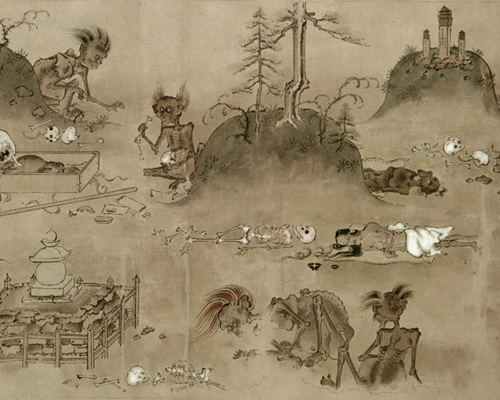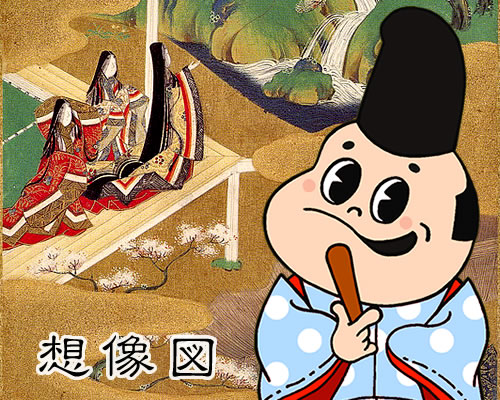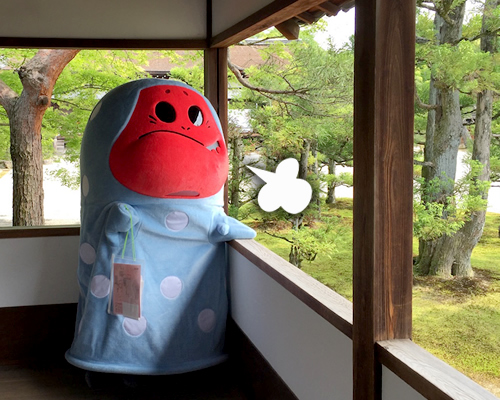
Kinukake-san is the local but lovable, cool but camp yuru-chara mascot for Kinukake-no-michi Road. Originally a ghost from the mid-Heian Era, more than a thousand years ago, Kinukake-san occasionally visits his favorite haunts in the area around Kinukake-no-michi Road. If you see him, just call out “Kinukake-san!” and he’ll sidle right over!
Kinukake-san does have his moods, though. He’ll have a perfectly friendly discussion with one person, and then completely ignore the next person. So if he turns a deaf ear to you, don’t take it personally.
One group that Kinukake-san is unlikely to ignore is women, since he was quite the playboy in his former life. If he casually asks for your messenger app username, don’t fall for it.
Also, don’t be shocked by his trademark Kyoto dialect and brusque style. He’s known to suddenly call someone out, Kyoto style, with one of his favorite epithets. Among the milder ones: “Why, you little pipsqueak!” and “Hey, Stupid!”
That said, Kinukake-san can be a good sport. He joins other marathon fans in front of Ninna-ji Temple to urge on the athletes in the Kyoto Marathon every February, passing out KINUKAKESAN stickers and WISH THEM LUCK candies to the cheering onlookers.

However, there is a little-known – and somewhat creepier – alternative version of the story....
In the ancient burial ground at the foot of the mountain, in keeping with the custom of the times, the corpses were shrouded in white burial wrappings and left in view. From a distance, the scene looked like an array of silk umbrellas. As this version has it, it was the white-shrouded bodies of the dead that conjured up the image of the “silk-draped” mountainside.

Kinukake-san was an actual, historical figure, born in the mid-Heian Era, in 894 AD. Heir to a family of Kyoto aristocrats, Kinukake-san spent his youth in hedonistic pursuits, especially with young ladies. Unfortunately, one of these dalliances is believed to have sent Kinukake-san to an early grave: a woman he hurt turned to an occult practitioner called an Onmyoji to make Kinukake-san pay with his life.
Although Kinukake-san’s body was buried at the foot of Mt. Kinugasa, his soul could never rest because he had such a lust for life in the temporal world. As legend has it, he recast his spirit as an apparition, and headed back to his old haunts.
Only Kinukake-san himself knows if all the talk of his past is true, and he’s not saying. However, now that the people of the area have brought him back to life as the campy “yuru-chara” mascot for Kinukake-no-michi Road, it’s always easy to see what he’s up to. These days, Kinukake-san is living a pretty active life for a thousand year-old man.

Hoping to re-enter the mortal world in his afterlife, Kinukake-san first came back as a yokai apparition. However, except for a few people sensitive to the supernatural, nobody could ever see him. So he had another idea: returning to Kinukake-no-michi Road as a quirky, lovable mascot character that everyone could appreciate. The Kinukake-no-michi Road Promotional Council was receptive to his suggestion. They hired an expert in the paranormal to work up detailed sketches of Kiknukake-san on which to base the mascot design. With the help of a tireless development team and the support of many people in the area, Kinukake-san’s desire to become a visible symbol for Kinukake-no-michi Road finally came to fruition in the fall of 2014.